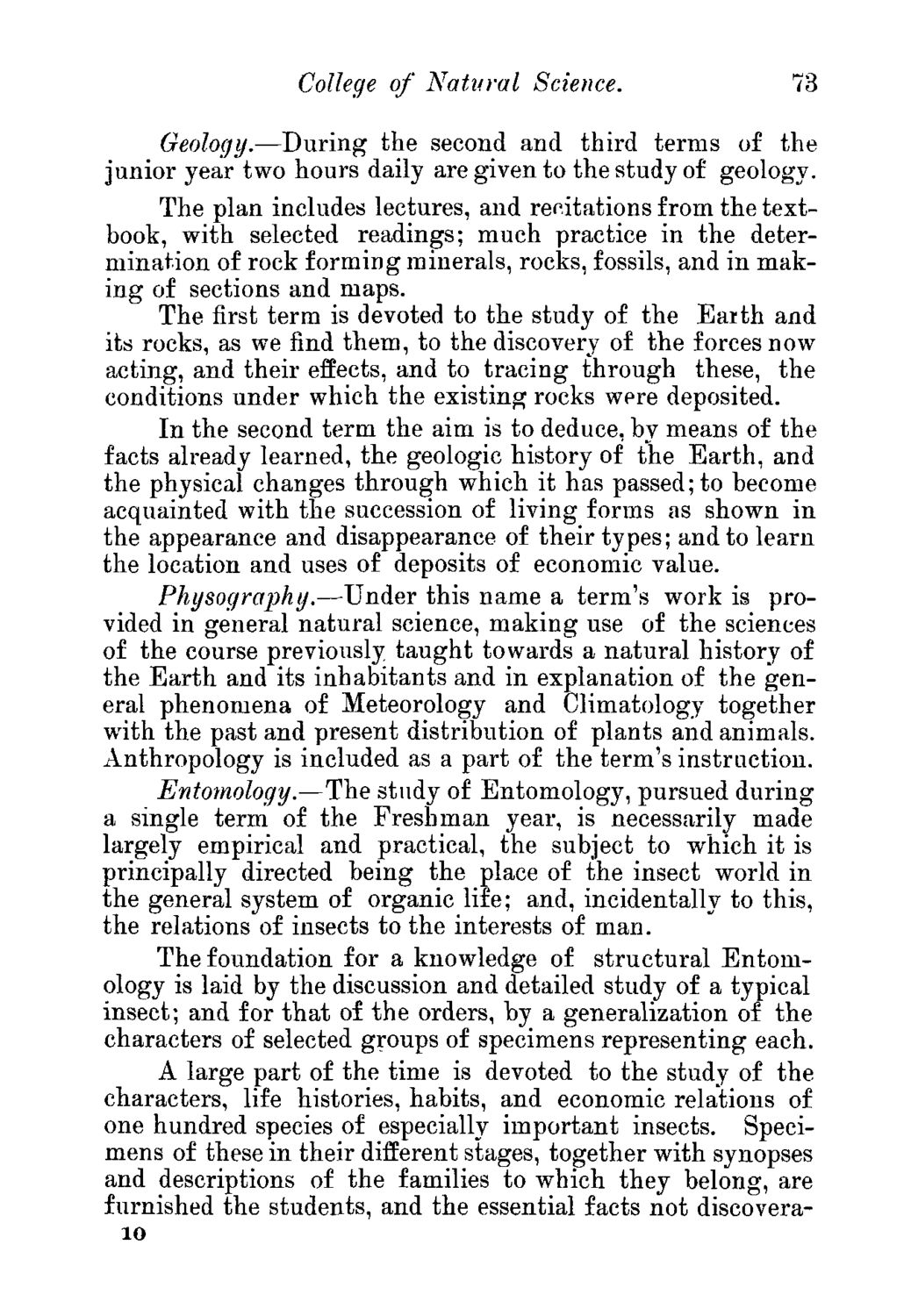| |
| |
Caption: Course Catalog - 1886-1887
This is a reduced-resolution page image for fast online browsing.

EXTRACTED TEXT FROM PAGE:
College of Natural Science. 73 Geology.—During the second and third terms of the junior year two hours daily are given to the study of geology. The plan includes lectures, and recitations from the textbook, with selected readings; much practice in the determination of rock forming minerals, rocks, fossils, and in making of sections and maps. The first term is devoted to the study of the Earth and its rocks, as we find them, to the discovery of the forces now acting, and their effects, and to tracing through these, the conditions under which the existing rocks were deposited. In the second term the aim is to deduce, by means of the facts already learned, the geologic history of the Earth, and the physical changes through which it has passed; to become acquainted with the succession of living forms as shown in the appearance and disappearance of their types; and to learn the location and uses of deposits of economic value. Physography.—Under this name a term's work is provided in general natural science, making use of the sciences of the course previously taught towards a natural history of the Earth and its inhabitants and in explanation of the general phenomena of Meteorology and Climatology together with the past and present distribution of plants and animals. Anthropology is included as a part of the term's instruction. Entomology.—The study of Entomology, pursued during a single term of the Freshman year, is necessarily made largely empirical and practical, the subject to which it is principally directed being the place of the insect world in the general system of organic life; and, incidentally to this, the relations of insects to the interests of man. The foundation for a knowledge of structural Entomology is laid by the discussion and detailed study of a typical insect; and for that of the orders, by a generalization of the characters of selected groups of specimens representing each. A large part of the time is devoted to the study of the characters, life histories, habits, and economic relations of one hundred species of especially important insects. Specimens of these in their different stages, together with synopses and descriptions of the families to which they belong, are furnished the students, and the essential facts not discovera10
| |